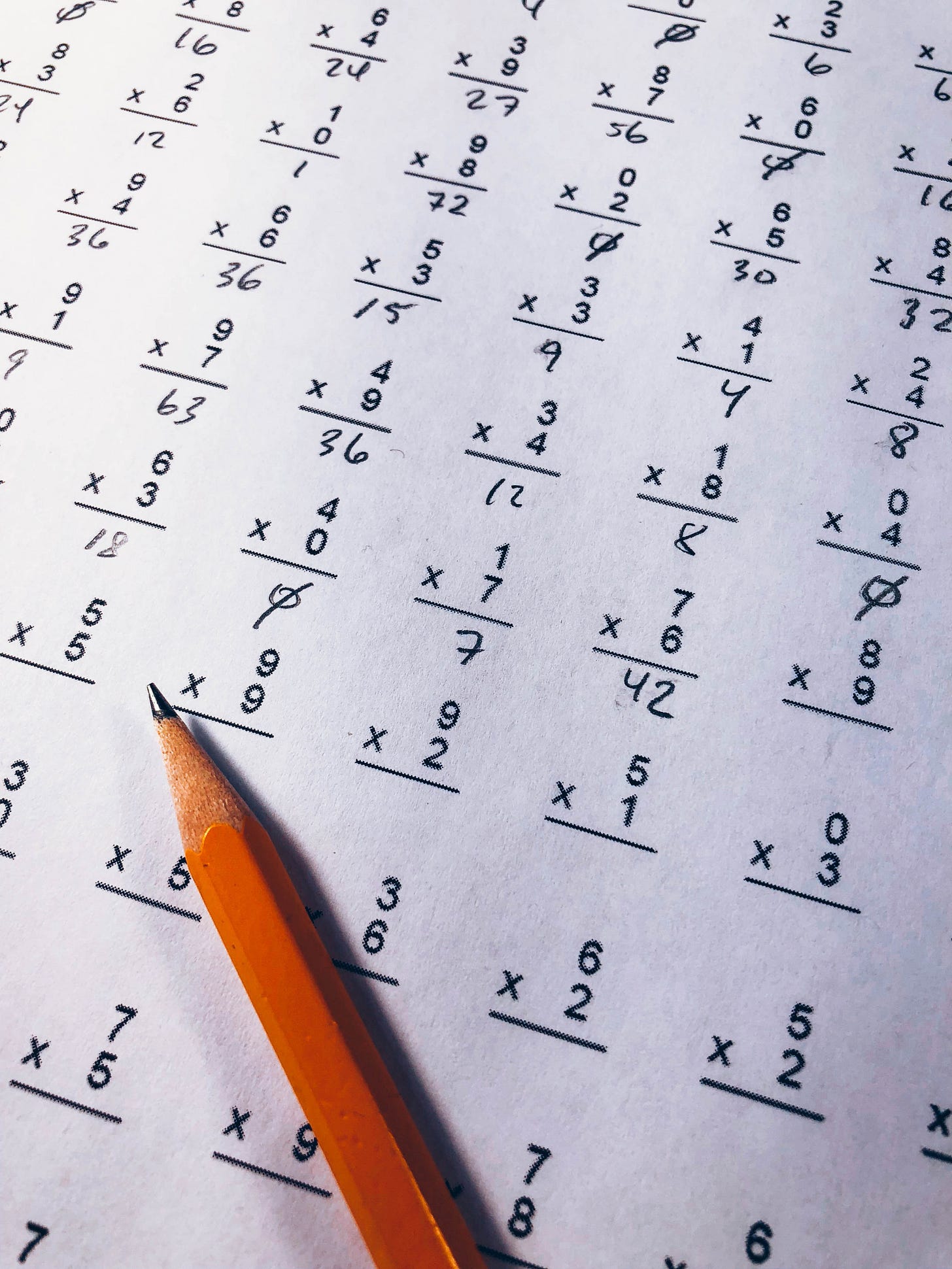Could the "Science of Math" end the achievement plateau?
There are a lot of problems with math (= dad joke).

In the 2019-2020 school year, the “Science of Reading” was all the rage before Covid flipped the world upside down, taking education with it. If you’re unfamiliar with the “Science of Reading” and/or haven’t yet listened to Emily Hanford’s “Hard Words” podcast, do yourself a favor.
Hanford’s reporting and engaging podcast started a movement among reading wonks that gained even more support from parents and education advocates: teach kids to read using a more scientific and proven approach — the “Science of Reading.” Some of those reading wonks, myself included, had for years been futilely beating the drum of a better approach to teaching foundational literacy skills.
Now I’m wondering if we’re not in desperate need for a similar movement in math.
Why? In Philadelphia, around 36% of students score proficient on the state reading test. In math, it’s just 21%. Literacy is certainly the key to unlocking proficiency in many subjects, math included. But numbers are the language of science, technology, and engineering. I’m neither an expert in math, nor an expert math teacher, and I’m barely scratching the surface of a complex issue. But I do know that outcomes as poor as those I just referenced mean something is likely broken in the way we’re teaching math.
It’s important to distinguish between math and arithmetic. The former is a broad term that captures many disciplines like geometry, algebra, statistics, etc. The latter is what I’m mostly focused on and most similar to what the “Science of Reading” movement targeted — phonics. It’s sometimes referred to as numeracy, though numeracy’s definition continues to evolve and likely encompasses a much broader understand of math. Arithmetic focuses more explicitly on understanding of how numbers work, along with an understanding of the four basic operations.
In my role prior to being a principal, I worked as the literacy director for a small (now defunct) charter network, where I visited dozens of K-2 classrooms in which teachers were improperly teaching foundational reading skills (I’m not faulting the teachers here — many were woefully underprepared by colleges and certification programs). They’d do a letter a week, prioritize letter names instead of sounds, and encourage students to use the pictures in a text to figure out the words. Unsurprisingly, students would enter third grade and being wholly unprepared to actually read words off the page.
We (the charter network and public ed at large) missed this trend because for years we relied too heavily on state reading comprehension tests, which often begin in 3rd grade and can tell us when students don’t understand what they’re reading. This led to lots of reading-comprehension-focused teacher development. Problematically, though, this obscured the fundamental reason that many students struggled with comprehension — they couldn’t read the words on the page.
(Quick primer on reading: decoding + language comprehension = reading comprehension. In other words, one has to be able to read the words and understand their individual and collective meaning in order to comprehend a text. You might be able to decode words in another language, but if you don’t know their meaning, you aren’t comprehending.)
It took the widespread adoption of oral reading assessments for teachers and school leaders to better see the high correlation between a student’s ability to read words accurately and at an appropriate — and their overall reading comprehension.
In math (arithmetic), I worry that we’re behind our progress in reading, relying too heavily on students’ performance in high-stakes tests that assess general math achievement, and then designing curriculum and teacher development accordingly.
Specifically, I worry that we move students too quickly to abstract mathematical thinking without having developed a deep, concrete understanding of how numbers and basic operations work. This is the mathematical analog of rushing students past phonics and phonemic awareness and onto reading comprehension.
I see this all the time in classrooms. Students in kindergarten, first, and second grade labor in math workbooks. They’ll circle seven kittens to represent the symbol “7,” instead of repeatedly using objects to orally count to seven, or write out 6 hash marks and 3 has marks to represent 6+3=9. In upper grades, “number talks” might ask students to orally explain various ways to create the number “453.” I worry these are math analog of doing a letter a day or telling students to use picture clues to decode a word.
Years ago, I spent two summers training as a Montessori teacher at the Houston Montessori Center. “Concrete to abstract” was the guiding principle of Montessori math (arithmetic, really) instruction. Students spent lots of time with counting beads and a multiplication and division board before ever solving a worksheet. As a result, Montessori teachers are immersed in these lessons during their training. I did well in math throughout my own K-12 experience. And still I was floored as an adult during Montessori training one day when the teacher held up a cube and made me use my finger to count the beads that formed its length, width, and height. “Each side of the cube is equal, right?” she asked. I nodded. “That’s why when we ‘cube’ a number, we multiply it by itself three times.”
Thanks for reading. Have a great weekend.
